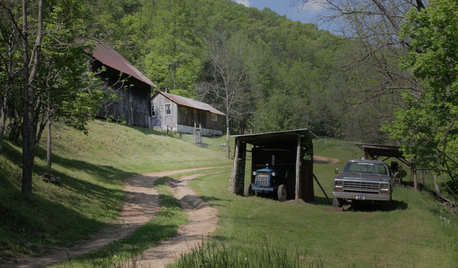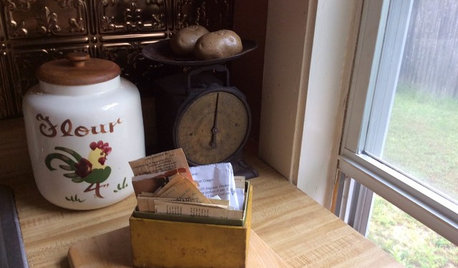Life after garlic mustard?
hoyasahoy
14 years ago
Related Stories

GARDENING GUIDESDo You Have This Invasive Plant in Your Yard?
Garlic mustard is spreading across the U.S. Here’s how to spot it and what to do
Full Story
DECORATING GUIDES8 Ways to Live Happily Ever After With a Colorphobe
Appease your partner while satisfying your color cravings with these win-win decorating maneuvers
Full Story
TASTEMAKERSNew Series to Give a Glimpse of Life ‘Unplugged’
See what happens when city dwellers relocate to off-the-grid homes in a new show premiering July 29. Tell us: Could you pack up urban life?
Full Story
LIFE11 Tiny Tricks That Make Life a Tad Better
Make these small tweaks to your home and daily routine, and life will be easier, less rushed and maybe healthier too
Full Story
GARDENING AND LANDSCAPINGPorch Life: Banish the Bugs
Don't let insects be the bane of your sweet tea and swing time. These screening and product ideas will help keep bugs at bay on the porch
Full Story
KITCHEN DESIGNPersonal Style: 50 Clever Real-Life Kitchen Design Details
Get ideas from savvy homeowners who have a knack for creating kitchens celebrating personal style
Full Story
HOUZZ TOURSMy Houzz: New Life for a Dilapidated Cape Cod
Neutral colors, classic furnishings and coastal touches outfit a floral designer and her husband’s Massachusetts home
Full Story
LIFESurprising Ways to Pare Down at Home
All those household items you take for granted? You might not need them after all. These lists can help you decide
Full Story
KITCHEN DESIGN5 Home Cooks Share Their Favorite Family Recipes
Peek inside the kitchens of these Houzz users and learn how to cook their time-tested, passed-down dishes
Full Story







eibren
hoyasahoyOriginal Author
Related Professionals
New Mexico Landscape Architects & Landscape Designers · Severn Landscape Architects & Landscape Designers · Medford Landscape Contractors · Americus Landscape Contractors · East Patchogue Landscape Contractors · Vallejo Landscape Contractors · Waterford Landscape Contractors · Gainesville Fence Contractors · Memphis Fence Contractors · Piedmont Fence Contractors · Thousand Oaks Fence Contractors · La Puente Fence Contractors · Paterson Siding & Exteriors · South Plainfield Siding & Exteriors · North Richland Hills Siding & Exteriorsmaifleur01
hoyasahoyOriginal Author
megoblue
alsnavely
bob64